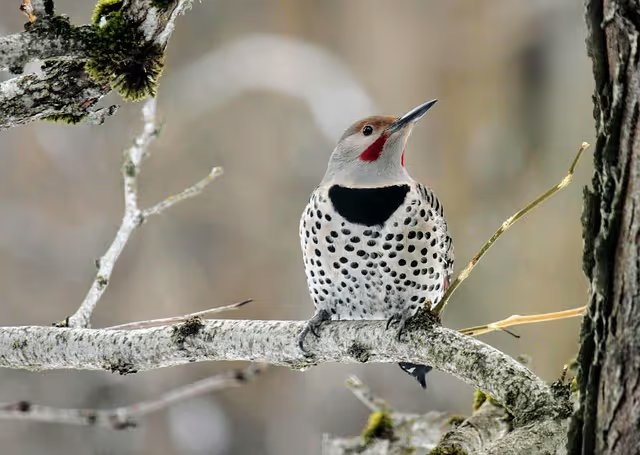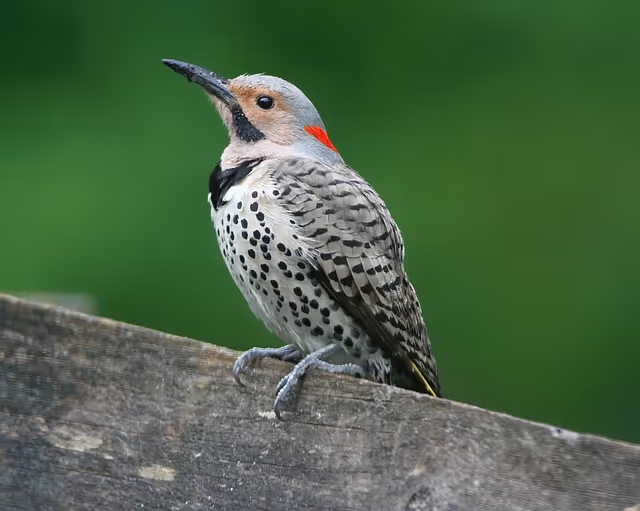The Northern Flicker: A Bird with Two Forms



The Northern Flicker (scientific name: Colaptes Auratus) is a large, brown woodpecker with a gorgeous black-scalloped plumage and an elegant expression. Since the Northern Flicker is an abundant and widespread bird, there is a good chance that one is hanging out in your neighborhood right now. These birds are a common sight year round across most of the United States, including all but the northeastern most tip of Washington State.
The Northern Flicker has the potential to be easily mistaken for other bird species since it comes in two forms that look very different from each other. Here in the Western United States, you are more likely to see Northern Flickers with Red shafts (known as Red-Shafted Flickers). However, on the Atlantic Coast, you are more likely to see Northern Flickers with yellow shafts (known as Yellow-Shafted Flickers). In the western Great Plains, the flickers are "intergrades" (4) between Red-Shafted and Yellow-Shafted birds. This is because the ranges of the two forms meet there. As a result, the birds interbreed.
The Northern Flicker lives in a wide variety of habitats, including towns, groves, woodlots, semi-open country, and open forests. Essentially, if there are trees around, there is probably a Northern Flicker hanging around. There is one notable exception to this rule, however. Northern Flickers generally avoid areas of dense, unbroken forest. The species requires some open ground to be available for them to forage, and unbroken forest doesn't tend to offer that.

Northern Flickers forage primarily by hopping on the ground or by climbing trees to capture the ants and beetles that make up the overwhelming majority of their diet. They particularly love ants, and will stop at nothing to pursue them, including hammering at the soil to catch those living underground. Additionally, Northern Flickers occasionally fly out to catch insects that are in the air. From time to time, you might also see them perching on the outer branches of trees eating berries and fruit.
Woodpeckers are known for being noisy birds, and Northern Flickers are no exception. They drum on objects in order to communicate with other birds and to defend their nesting and feeding territories. The objective is to make as much noise as possible, which is why you will occasionally see a woodpecker drumming on metal objects instead of the trees that they are famous for drumming on. In addition to making lots of noise, Northern Flickers will also defend their territory by putting on aggressive displays, including flicking their wings open to showcase their bright undersides, and swinging their heads back and forth. These displays are also used to attract mates. One such display is a "fencing duel" (2), in which
Two birds face each other on a branch, bills pointed upward, and bob their heads in time while drawing a loop or figure-eight pattern in the air, often giving rhythmic wicka calls at the same time. (2)
Northern Flickers make their nests inside cavities that they construct in trees and posts. They prefer to build their cavities in pine, willow, and cottonwood trees, as well as in dead wood. Cavities are excavated by males and females. They tend to be positioned six to twenty feet above the ground, but can be much higher. The hole that serves as the entrance to the cavity is about three inches (7.62 centimeters) in diameter. The cavity itself is thirteen to sixteen (33.02 to 40.64 centimeters) inches deep. Inside, the cavity has a bed of wood chips for the eggs and young to rest on. However, once the young are approximately 17 days old, they begin clinging to the cavity wall instead of lying on the floor.

Northern Flickers have one brood per year in most areas of the country. In the Southern United States, they have two broods per year. Each brood consists of approximately three to twelve eggs. The eggs are white. Incubation is handled by both males and females, with males always taking the night shift. The incubation process takes eleven to sixteen days to complete. Both parents work to feed the young through a process known as regurgitation. Regurgitation, in this particular case, is when the parents gorge themselves many times over, return to the nest, and purge the food (essentially throws it up) to feed the young. While this process may seem off-putting, it is actually to the benefit of the young as the food, having been partially digested by their parents, is somewhat easier for them to absorb. The young leave the nest about one month after hatching.
Northern Flickers are fairly large for woodpeckers. They weigh between 3.9 and 5.6 ounces (110 to 160 grams), and are 11 to 12.2 inches (28 to 31 centimeters) long. Their wingspan varies from 16.5 to 20.1 inches (42 to 51 centimeters). They have thin rounded heads, long flared tails, and bills that are "slightly downcurved" (1). Northern Flickers have a brownish plumage that is beautifully patterned with black bars, crescents, and spots. A white rump patch tends to be visible when perched and "conspicuous" in flight (1). The undersides of the Flicker's tail and wing feathers are red in the western part of the United States and bright yellow in the eastern part of the United States. Yellow-shafted Northern Flickers also have gray crowns, tan faces, and red nape crescents. Additionally, males sport a black mustache stripe. Red-shafted Northern Flickers have brown crowns and gray faces, but don't have nape crescents. Males also have a red mustache stripe. Hybrids have an intermediate appearance.
References
© Ian D. Caldwell, January 2022
Touch whale bones, examine shipwreck artifacts and connect with the coast's living history.

Support our mission, get involved in educational programs, or contribute through donations and volunteering.